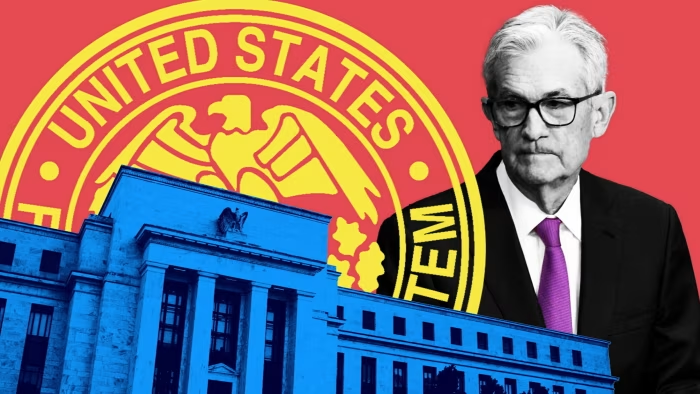
In the last FOMC meeting, the Federal Reserve delivered an expected 25 basis point rate cut, bringing rates down another notch. But the real story wasn’t the cut itself—it was what Chair Jerome Powell announced afterward: the Federal Reserve will officially end Quantitative Tightening (QT) on December 1, 2025. This marks a fundamental shift in monetary policy that crypto analysts are calling “an extremely bullish setup for risk assets, especially crypto.”
To understand why this matters, you need to understand what QT is, why ending it floods markets with liquidity, and how that liquidity historically flows into Bitcoin, Ethereum, and the broader cryptocurrency market. December 1 isn’t just another date on the calendar—it’s potentially the starting gun for crypto’s next major bull leg.
1.What Is Quantitative Tightening and Why Does It Matter?
Quantitative Tightening (QT) is the process by which the Federal Reserve reduces its balance sheet by allowing bonds and other securities it purchased during economic crises to mature without replacing them. In simple terms: the Fed is removing money from the financial system.
Here’s how it works:
During Economic Crises (2008, 2020):
- The Fed buys massive amounts of Treasury bonds and mortgage-backed securities
- This injects cash into the banking system, lowering interest rates and encouraging lending
- The Fed’s balance sheet explodes (from ~$900B in 2008 to $9 trillion in 2022)
During Quantitative Tightening (2022-2025):
- The Fed stops buying new bonds and lets old bonds mature without replacement
- This removes cash from the system, tightening financial conditions
- The Fed’s balance sheet shrinks, reducing liquidity available for investment
Why This Matters for Crypto:
Crypto assets thrive in high-liquidity environments. When money is cheap and abundant, investors seek higher returns in riskier assets like Bitcoin, Ethereum, and altcoins. When liquidity tightens, capital flows back to safer assets like bonds and money market funds.
The Fed’s QT program, which began in 2022, removed approximately $2 trillion from financial markets over three years. This liquidity drain contributed to crypto’s bear market in 2022-2023, as investors faced less available capital to deploy into speculative assets.
Now, with QT ending December 1, that dynamic reverses.
2.What Happens When QT Ends: Liquidity Returns
When the Fed ends QT on December 1, it stops draining liquidity from financial markets. While this doesn’t immediately inject new money (that would require renewed Quantitative Easing, or QE), it creates a baseline where liquidity remains constant rather than shrinking.
More importantly, ending QT signals that the Fed believes the economy is stable enough to support risk-taking again. This psychological shift changes investor behavior:
Before December 1 (QT Active):
- Liquidity is being drained → Investors stay defensive
- Rate cuts are offset by balance sheet reduction → Mixed signals
- Risk assets struggle to sustain rallies
After December 1 (QT Ends):
- Liquidity stabilizes → Investors feel safer taking risk
- Rate cuts now have full impact → Clear dovish signal
- Risk assets (stocks, crypto) can rally without fighting liquidity headwinds
The “Extremely Bullish Setup” for Crypto:
Analysts describing this as “extremely bullish for crypto” are referencing historical patterns. When the Fed pivots from tightening to easing (rate cuts + ending QT), it typically triggers 6-12 month rallies in risk assets. Bitcoin’s 2023-2024 rally began when markets anticipated Fed dovishness. Now, with QT officially ending and rate cuts continuing, the monetary environment becomes unambiguously supportive.

3.The $590 Million Liquidation: Why Volatility Preceded the Announcement
Interestingly, the Fed’s announcement came amid significant market turmoil. Over the 24 hours preceding the October 30 meeting, $590 million in leveraged positions were liquidated, with long traders (those betting on price increases) bearing the brunt of losses.
This volatility suggests traders were positioned for disappointment—expecting hawkish language from Powell or slower rate cut guidance. When Powell instead announced QT’s end, it caught overleveraged shorts off guard, creating conditions for a relief rally.
Why Liquidations Matter:
Large-scale liquidations clear out weak hands—traders using excessive leverage who are forced to exit at unfavorable prices. Once these positions are flushed out, the market becomes “cleaner,” with remaining participants holding stronger conviction and less forced selling pressure. This sets up healthier conditions for sustained rallies.
The $590M liquidation, while painful for affected traders, may have been necessary volatility that clears the path for December’s potential rally.
4.Historical Context: What Happens After the Fed Pivots
To understand what might come next, let’s examine previous Fed pivot points:
2019 Pivot (End of Rate Hikes):
- Fed ended rate hikes in July 2019 after market pressure
- Bitcoin rallied from $4,000 in April 2019 to $13,800 by June 2019 (245% gain)
- Broader crypto market followed with altcoins delivering even stronger returns
2020 Pivot (QE Restart After COVID):
- Fed launched unprecedented QE in March 2020, injecting $3 trillion
- Bitcoin rallied from $5,000 in March 2020 to $69,000 by November 2021 (1,280% gain)
- Altcoins experienced 10-100x gains during the same period
2023 Pivot (Anticipation of Rate Cut Cycle):
- Markets began pricing in eventual Fed cuts in late 2022
- Bitcoin rallied from $16,000 in November 2022 to $73,000 by March 2024 (356% gain)
- Institutional ETF inflows accelerated once pivot became clear
Pattern Recognition:
In each case, crypto rallied strongly in the 6-18 months following a Fed pivot from tightening to easing. The magnitude varied based on macro conditions, but the direction was consistent: easier monetary policy = crypto appreciation.
December 1, 2025 marks another pivot point. If history is any guide, the subsequent 6-12 months could deliver substantial gains for crypto investors positioned ahead of liquidity returning to markets.
5.Why December 1 Is the Date to Watch
December 1 isn’t arbitrary—it’s when QT officially ends and the Fed stops actively draining liquidity. But several other factors converge around this timing that amplify the significance:
Factor 1: Year-End Institutional Positioning
December is when institutional investors finalize year-end positioning. Funds that underperformed in 2025 may add crypto exposure to boost returns before annual reports. With QT ending, institutions have regulatory and macroeconomic cover to increase risk allocations.
Factor 2: Tax-Loss Harvesting Ends
Many investors sell losing positions in November-December to harvest tax losses. Once this seasonal selling pressure ends in early January, fresh buying can emerge without the overhang of tax-driven selling.
Factor 3: Q1 2026 Capital Flows
The first quarter of the calendar year typically sees fresh capital deployed as bonuses are paid, retirement accounts are funded, and new investment mandates kick in. If QT ends in December and Q1 capital flows begin in January, it creates a powerful one-two punch of liquidity.
Factor 4: Corporate Treasury Announcements
Public companies making Bitcoin treasury allocations often announce near year-end or early Q1 (coinciding with earnings reports). If multiple companies announce major BTC purchases in December-January, it amplifies the liquidity tailwind from QT’s end.
6.What This Means for Bitcoin, Ethereum, and Altcoins
Different sectors of crypto will respond differently to QT’s end:
Bitcoin: As the most liquid and institutionally adopted crypto, Bitcoin typically benefits first and most directly from improved macro conditions. Expect BTC to lead any rally, potentially targeting $125,000-$140,000 if momentum builds.
Ethereum: ETH benefits from both macro liquidity and its role as the infrastructure layer for DeFi, NFTs, and smart contracts. With gas fees declining due to Layer-2 scaling and staking yields attractive, ETH could outperform BTC on a percentage basis.
Altcoins: Historically, altcoins rally 1-3 months after Bitcoin establishes a strong uptrend. If BTC surges in December-January, expect altcoins to follow with amplified gains (and amplified volatility) in Q1 2026.
DeFi Tokens: Improved liquidity benefits DeFi protocols directly, as users deploy capital into yield-generating strategies. Tokens like AAVE, UNI, and COMP could see renewed interest.
Memecoins: High-liquidity environments fuel speculative mania. If retail FOMO returns alongside institutional capital, memecoins could experience explosive but unsustainable rallies.
7.Risks That Could Derail the Rally
While ending QT is bullish, several risks could prevent the expected rally:
Risk 1: Economic Recession
If the U.S. economy enters recession, even loose monetary policy may not spark risk appetite. Investors could stay defensive regardless of liquidity conditions.
Risk 2: Geopolitical Shocks
Escalation in U.S.-China tensions, Middle East conflicts, or unexpected geopolitical events could trigger flight to safety, overwhelming the positive impact of QT ending.
Risk 3: Regulatory Crackdown
If new crypto regulations emerge that restrict institutional participation or exchange operations, it could offset macro tailwinds.
Risk 4: Market Is Already Positioned
If traders have already positioned for QT’s end (as suggested by recent price action), the “buy the rumor, sell the news” dynamic could prevent further upside once December 1 arrives.
8.How to Position for December 1 and Beyond
Strategy 1: Accumulate Before December 1
If you believe QT’s end will trigger a rally, accumulate positions in Bitcoin, Ethereum, and select altcoins throughout November. Buying before the catalyst reduces the risk of chasing prices higher after the move begins.
Strategy 2: Use Scaled Entries
Rather than going all-in at once, scale into positions over 2-4 weeks. This averages your entry price and reduces risk if volatility continues before the rally begins.
Strategy 3: Focus on Liquid, Institutional-Grade Assets
Liquidity-driven rallies favor assets with deep markets and institutional participation. Prioritize BTC and ETH over speculative micro-caps.
Strategy 4: Set Clear Profit Targets
Define exit points before entering positions. For example: sell 25% at +20%, another 25% at +50%, and let the final 50% run with a trailing stop. This locks in gains while maintaining upside exposure.
Strategy 5: Trade on Platforms With Strong Risk Management
Use MEXC’s advanced trading tools including take-profit and stop-loss orders to automate exits. Emotional decision-making during volatile periods destroys returns—let automation handle it.
9.The Bottom Line: Macro Winds Are Shifting
The Federal Reserve ending Quantitative Tightening on December 1, 2025 represents a fundamental shift in monetary policy that historically precedes strong crypto performance. While no outcome is guaranteed and risks remain, the setup is as favorable as it’s been since 2023’s rally began.
For traders and investors paying attention, the message is clear: liquidity is returning, rate cuts are continuing, and the macro environment is turning decisively supportive of risk assets. Whether December 1 marks the exact inflection point or simply accelerates trends already in motion, crypto markets are entering a period where tailwinds outnumber headwinds.
The question isn’t whether QT ending matters—it clearly does. The question is whether you’ll be positioned to benefit when fresh capital begins flowing back into crypto markets.
Disclaimer: This material does not constitute advice on investments, taxes, legal matters, finance, accounting, consulting, or any other related services, nor is it a recommendation to buy, sell, or hold any assets. MEXC Learn provides information for reference only and does not constitute investment advice. Please ensure you fully understand the risks involved and invest cautiously. All investment decisions and outcomes are the sole responsibility of the user.
Join MEXC and Get up to $10,000 Bonus!



